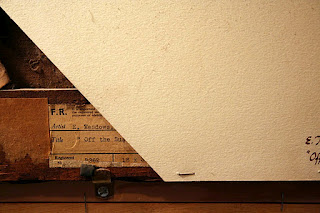We often get inquiries from collectors about obtaining an insurance appraisal for their collection of fine art. Before hiring an appraiser, collectors need to evaluate their homeowners insurance policy and consider which works meet the threshold of value that necessitates a separate fine arts policy. Property Casualty 360 has recently posted some useful information to help collectors evaluate if a separate rider for the collection is needed. In particular, the author notes that typical homeowners policies require appraisals for collections worth over $5,000. Read on:
Large private collections generally have proper risk management in place including fine-art insurance that covers the full value of the items. But many smaller collections (those valued below $1 million) tend to be insured under a traditional homeowners policy or have no insurance at all. If these collectors face a devastating event resulting in damage, they may discover too late that their coverage is not sufficient to address their financial losses.
In simple terms, the process of insuring collections of fine art and collectibles under a traditional homeowners policy tends to be time-consuming and difficult while possibly yielding lower limits and less expansive coverage when compared to obtaining coverage with a fine art and collectible insurance policy. The comparisons below address specific differences between the two types of policies.
Appraisals – Homeowners policies generally require appraisals for collections over $5000 as part of the underwriting process. Many collectibles insurance policies do not require appraisals at the time of application.
Deductibles – Zero-dollar deductibles are the standard for collectibles insurance polices with some offering additional deductible options. Homeowners policies may offer zero-deductible policies, but it is not as common.
Limits – The limit on fine art and collectibles coverage generally ranges from $500 to $2000 for a homeowners policy without the addition of a floater or rider. Even with an added floater or rider, homeowners policies tend to limit the level of exposure. A collectibles policy may offer coverage up to $1 million or more.
Coverage – One of the most important coverage differences between a homeowners policy and collectibles policy is the valuation of covered items. Homeowners policies tend to insure for actual cash value while collectibles policies insure the full collectible value of items in the collection. This distinction alone can reflect a startling difference in potential claims payments in the event of a loss. Homeowners policies generally cover named perils only, exclude coverage for items during transit, limit coverage on items stored away from the home to as little as 10 to 15 percent, and extend coverage to newly acquired items for only 30 days. By contrast, collectibles policies typically include all risk coverage and provide coverage for items in transit, items stored away from the home (such as in an office or storage facility), and newly acquired items for up to 90 days. Some collectibles policies may offer additional coverage benefits such as discounts for monitored fire and burglar alarms or items kept in a UL-rated safe.
Claims – In today’s insurance market, filing a claim against a homeowners policy may leave an insured vulnerable to premium increases at renewal or the possibility of non-renewal. With a separate collectibles policy, claims do not affect homeowner premiums or loss history. In addition, companies that offer collectibles insurance may have claims adjusters with a high level of expertise in this area. Adjusters with this specialized knowledge are better able to determine the value of unique or rare items, which should expedite the claims process and lead to a better outcome for the insured.
A detailed comparison of the benefits and limitations of standard homeowners insurance versus collectibles insurance demonstrates that specialty coverage can be very advantageous for serious collectors.



